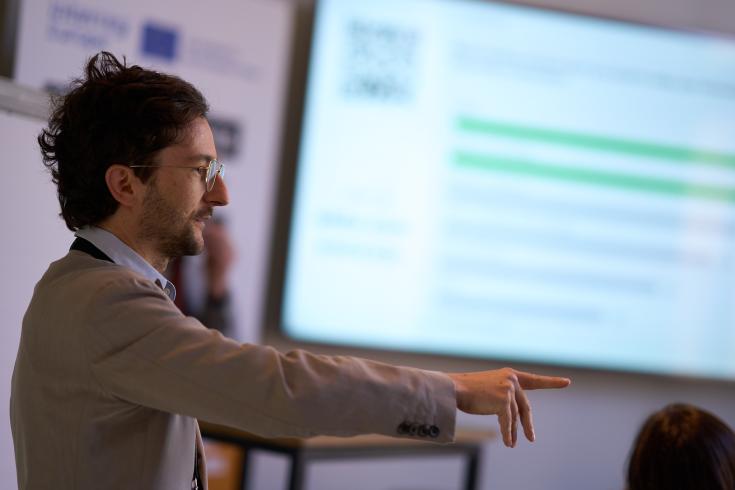European Innovation Ecosystems: Key learnings

On 20 June 2023, the Policy Learning Platform held a webinar on the topic of Regional Innovation Valleys and in particular European Innovation Ecosystems.
The European Commission launched complementary calls for proposals on 17 May 2023 under the European Innovation Ecosystems (EIE) part of Horizon Europe and also the Interregional Innovation Investments (I3) Instrument, in the framework of the Regional Innovation Valleys initiative.
Regional Innovation Valleys seek to gather both less and more innovative regions with a view to addressing the most pressing EU “burning challenges” – as set up in the New European Innovation Agenda – namely:
- reducing the reliance on fossil fuels,
- increasing global food security,
- mastering digital transformation (including cybersecurity),
- improving healthcare,
- achieving circularity.
Webinar recording
Webinar agenda
Concept and moderation by Marc Pattinson and Laura Varisco, Thematic Experts of Research and innovation.
00:00:01 Introduction to the topic by Laura Varisco
00:06:39 Keynote speech by Marc Pattinson
00:27:23 Presentation by Rafal Muszakowsk, Mazowieckie Voivodeship, Poland on “Smart Territorial Mapping and CEZAMAT” (COHES3ION)
00:40:47 Presentation by Albert Haan, Hanze University of Applied Sciences Groningen (TRACS3) on Enhancing Interregional Collaboration for Innovation Infrastructure in S3 Priority Areas
Panel discussion
- Can NUTS3 regions participate?
- What is the ideal % of fstp budget?
- Is it a 50% co-fund for both the Action Plan and the FSTP elements of I3 call?
Key learnings
From this webinar, we can highlight some key insights for regions willing to improve their innovation ecosystems building on S3, interregional cooperation, thematic/technological areas, sector value chains and European challenges.
- Regional Innovation Valleys calls are a good example of synergies between cohesion policy programmes and Horizon Europe, and how the territorial dimension has been well integrated under the Third Pillar. The Interreg Europe Policy Learning Platform already discussed this topic during an online discussion on Multi-Level Governance.
- The “Smart Territorial Mapping” initiative undertaken by COHES3ION partners showed the effectiveness of interregional learning to improve regional policies as this led to the expansion of the Regional Innovation Council of Mazovia.
- The cluster dimension has proven to be essential for S3 regional governance and place-based policies connecting R&D and technologies to the regional innovation ecosystem. CEZAMAT is also a good example of how multidisciplinary infrastructures can enhance innovation potential, especially for the benefit of SMEs.
- In the framework of regional S3, demand-driven and bottom-up initiatives are the most successful, moreover, it is important to foster long-term funding sustainability.
- Interregional and international collaboration should be part of regional strategies, especially when working with most developed regions, but the experience of TRACS3 proved that this is missing in the long-term vision of regional investments.
- SMEs' involvement in regional innovation projects is fundamental to exploiting innovation ecosystems to their full potential, therefore, in the framework of RIVs regions should rely on companies that are already aligned to close-to-market investments and cooperation.
- Creating robust indicators can improve SMEs' engagement and monitor the use of public funding for innovation. For instance, in PASSPARTOOL, the objective was to create indicators to assess non-R&D-driven innovation dynamics, with a strong emphasis on the direct involvement of the policy beneficiaries in the process of policy design, monitoring and evaluation.
Concerning the key points of interest of the RIVS calls, it is important to start securing the co-funding from regional authorities responsible for S3, paying attention to the consortium construction, involving the full quadruple helix partners and engaging territorial SMEs, especially to meet the investment dimension of I3 and the cascade funding opportunities via open calls.
Presentations
Download the presentations below.
